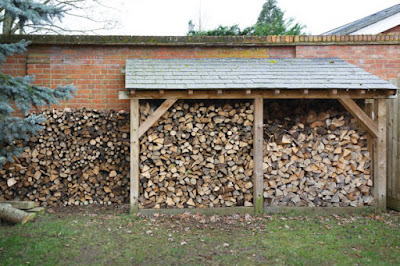A lean-to shed is a popular type of outdoor storage structure that is attached to the side of a larger building, such as a house, garage, or barn. It is typically used to store tools, equipment, gardening supplies, or other items that need to be protected from the elements. Lean-to sheds are known for their simple design and functionality, making them a practical and cost-effective option for additional storage space on residential or commercial properties.
Advantages of a Lean-To Shed
Lean-to sheds offer several advantages that make them a popular choice among homeowners and businesses alike. Here are some of the key benefits of a lean-to shed:1. Space-saving design
One of the main advantages of a lean-to shed is its space-saving design. By attaching the shed to the side of an existing building, you can make use of the available wall space without taking up additional yard space. This makes lean-to sheds ideal for properties with limited outdoor space or for those who want to maximize their storage capacity without building a separate structure.2. Easy access and convenience
Lean-to sheds are designed to be easily accessible, allowing you to store and retrieve items with ease. With the shed attached to a nearby building, you can quickly and conveniently access your stored items without having to walk to a separate location on your property. This can save you time and effort, especially when you need to grab tools or equipment quickly.3. Protection from the elements
Another significant advantage of a lean-to shed is that it provides protection from the elements. By attaching the shed to a building, you can take advantage of the existing structure's shelter, providing your stored items with an additional layer of protection against rain, snow, and harsh weather conditions. This can help extend the lifespan of your tools, equipment, and other items, reducing the risk of damage or deterioration.4. Versatility and customization
Lean-to sheds are highly versatile and can be customized to suit your specific storage needs. They come in various sizes, styles, and materials, allowing you to choose the one that best fits your requirements and complements the design of your existing building. You can also add shelves, hooks, or other storage accessories to customize the interior of the shed to accommodate your items efficiently.How to Build a Lean-To Shed
Building a lean-to shed can be a DIY project for those with basic carpentry skills and tools. Here are the general steps to build a lean-to shed:Step 1: Choose the location
Decide on the location where you want to attach the lean-to shed to your existing building. Consider factors such as the available space, accessibility, and the orientation to ensure optimal functionality.Step 2: Obtain necessary permits
Check with your local building department to determine if you need any permits or approvals to build a lean-to shed. Some jurisdictions may require permits for certain shed sizes or locations, so it's important to comply with local regulations.Step 3: Gather materials and tools
Once you have chosen the location and obtained necessary permits, gather all the materials and tools you will need for the construction. This may include lumber, roofing materials, screws or nails, a saw, hammer, level, and drill.Step 4: Prepare the foundation
Prepare the foundation for your lean-to shed by clearing the area and leveling the ground. You may need to pour a concrete slab or construct a wood or gravel base to provide a stable and level surface for the shed.Step 5: Frame the structure
Using the lumber and tools, frame the structure of the lean-to shed according to your desired dimensions and design. This may involve constructing a basic rectangular frame with studs, headers, and rafters, or following a specific plan or kit instructions if you are using a pre-designed shed kit.Step 6: Attach to the existing building
Carefully attach the framed structure to the side of the existing building, ensuring it is level, plumb, and securely anchored. This may involve attaching the shed to the wall studs or using brackets or braces for added stability. Follow local building codes and manufacturer's instructions for proper attachment methods.Step 7: Install roofing and siding
Once the shed frame is securely attached, install the roofing and siding materials of your choice. This may include shingles, metal roofing, or other weather-resistant materials for the roof, and wood, vinyl, or metal siding for the walls. Properly seal and flash all joints and seams to ensure a watertight and durable finish.Step 8: Add doors, windows, and finishing touches
Install doors and windows as needed, and add any additional features or accessories to complete your lean-to shed. This may include adding shelves, hooks, or storage solutions to the interior, painting or staining the exterior, and installing any desired lighting, ventilation, or security features.FAQs about Lean-To Sheds
Q: What are the common uses for a lean-to shed? A: Lean-to sheds are commonly used for storing tools, equipment, gardening supplies, lawn care items, bicycles, and other outdoor items. They can also serve as a workshop, a hobby or craft space, or as additional storage for household items.

0 comments:
Post a Comment
Note: Only a member of this blog may post a comment.